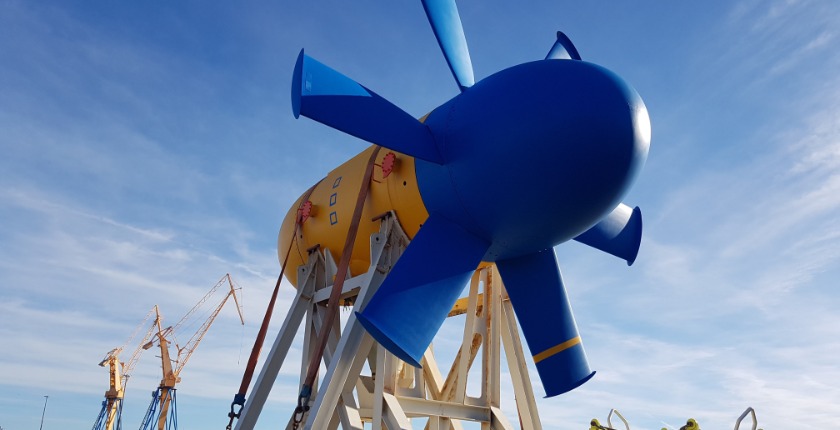1000 Solutions - May 1, 2019
Sabella, sustainable and reliable electricity from the power of tides


Written by Tristan Lebleu 2 min read
Underwater turbines could provide renewable energy to off-grid communities who rely on fossil fuels.
In most of the roughly 11’000 inhabited islands around the world, power supply is a big issue. As most of them are not connected to the electricity grid, the 730 million island inhabitants heavily rely on diesel generators to access electricity. This has downside effects on their economy, as fossil fuels are both expensive and volatile. The latest “Island Electricity Data Book” from the Maldives’ Ministry of the Environment shows that one fifth’s of the country’s GDP is spent on importing fuel. This dependence on fossil fuels also has an impact on the environment, as diesel generators are heavy polluters. Moreover, island communities are some of main victims of the effects of climate change.
The island of Ushant, 18 kilometers off of France’s Brittany coast, is no exception. For decades, the 883 inhabitants of this off-grid territory relied solely on fossil fuels to access electricity... Until recently. "We realised that we have around us everything we need to produce energy - we have sun, like today, we often have wind, and we have sea currents around the island" said Denis Palluel, the Mayor of Ushant, in an interview with Euronews. Indeed, the island is located next to the Fromveur Passage, known as one of the strongest tidal currents in Europe.
Unsurprisingly, in October 2018 the French island was chosen by Sabella to deploy its Marine Current Energy Device, D10. This solution, based on innovative turbine technology, can harness ocean currents to provide predictable and clean energy for Ushant’s inhabitants.
The 17-metre high turbine is attached to the seabed and uses the currents of rising and falling tides to turn a 10-metre wide rotor, which creates energy. This is known as hydrokinetic energy. Once converted into electricity, it is delivered onshore through underwater cables and stored on the land. One of its key features is its simple and robust design, as the turbines can resist harsh oceanic conditions, lowering the maintenance cost. As for marine life, tests have shown no harm on animals because the turbines turn slowly, as explained by Sabella’s CEO, Jean-François Daviau:
Tidal energy is regarded as a key component of the clean energy transition, for island communities as well as for onland grid power source, because of its high predictability. “Since tidal energy production is not influenced by weather conditions but only by well-known cycles of the moon, sun and earth, it is predictable hundreds of years in advance” says Ocean Energy Europe.
Ocean energy, which includes tidal energy, wave energy, and salinity gradient, is gaining major attention as an alternative to fossil fuels. In Europe, marine energy installations reached nearly 40MW in 2018, and the industry plans to deploy 100GW of production capacity by 2050, meeting 10% of the continent’s electricity demand. It could also be a major economic opportunity, with an expected market of 53 billion euros a year by 2050, and 400’000 job creation.

Written by Tristan Lebleu on May 1, 2019


